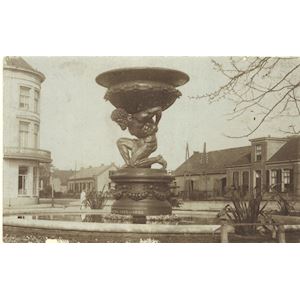
11. Lion's head fountain Manus
This lion’s head symbolises the bombardment of Zutphen on 14 October 1944, near the end of the Second World War. Allied planes wanted to bomb the bridge over the IJssel to hinder the German ammunition transport travelling west. The bridge was barely struck, while the northwestern town centre suffered a lot more. Nearly a hundred people lost their lives. Hundreds more were wounded and there was enormous destruction in a large part of the town. The bombed area was around the station. This brings us to the lion’s head. It is part of the fountain which had been in the station square since 1890.The fountain showed Atlas, colloquially known as Manus. Because of its position, with its buttocks facing arriving passengers, not everyone was happy with this sculpture. In the local paper people spoke of a scandal. The city council officially decided to screen off his complete nudity with a row of conifers. When these were later cut down, the discussion started again. During the bombardment the fountain was hit directly and not much remained. This lion’s head was found after the bombing in the rubble by a boy and kept. In 2012 the lion’s head was lent to the museum by his son. The station square was rearranged after the war and also a new station was built.


The Musea Zutphen -Stedelijk Museum Zutphen en het Museum Henriette Polak- are located in the 17th-century city palace Hof van Heeckeren. History, cultural history, visual arts and topical matters meet here in a surprising way
- 's Gravenhof 4
- Zutphen Netherlands
- 0575516878
- www.museazutphen.nl
